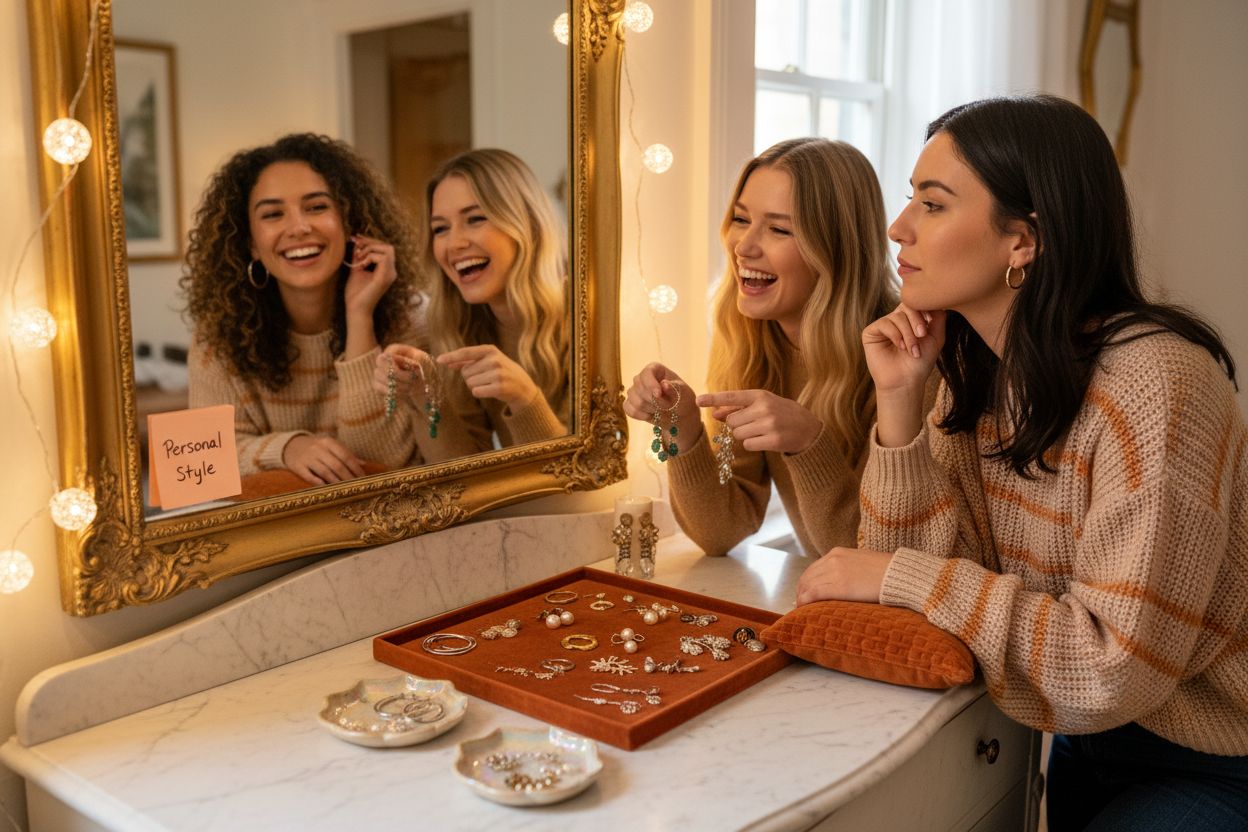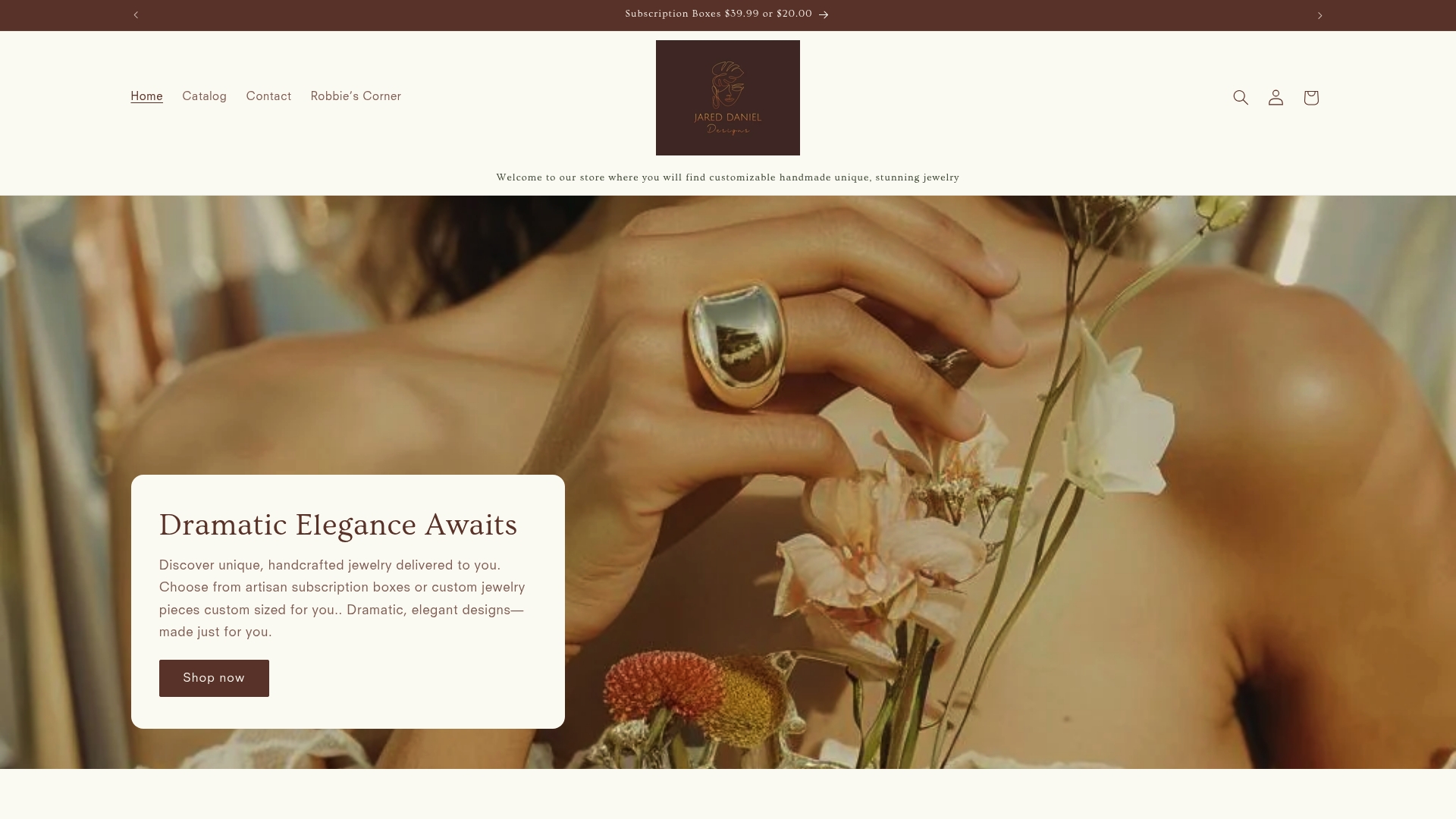Your cart (0)
Your cart is empty
Tax included and shipping calculated at checkout
Drawer menu
Tax included and shipping calculated at checkout
Earrings do more than just add sparkle to your look. These tiny accessories have carried deep meanings across cultures, from status symbols to personal stories you wear on your ear. Despite their size, studs, hoops, and dangles account for the vast majority of global earring styles, making up over 80 percent of all earring sales worldwide. It might seem like a simple fashion choice, but each earring style carries its own language, shaping how you are seen and how you express yourself.
| Takeaway | Explanation |
|---|---|
| Understand earring types and styles | Knowing earring styles helps you choose accessories that reflect your personality and aesthetic preferences. |
| Earrings communicate personal identity | Your choice of earrings can express cultural backgrounds, social status, and personal stories, offering insights into your identity. |
| Material and design matter significantly | The choice of materials and intricate designs greatly affect the appearance and significance of earrings, influencing style and comfort. |
| Consider comfort and fit when choosing | Different earring types can impact comfort based on weight and design, so matching them to your ear’s anatomy is crucial. |
| Earrings have historical and cultural importance | Understanding the cultural context of various earring styles enhances their meaning, connecting them to global traditions and personal narratives. |
Earrings are more than just decorative accessories. They represent personal style, cultural expression, and individual personality. Understanding different earring types allows you to select pieces that complement your aesthetic and enhance your overall look.
Earrings are fundamentally classified based on their design, attachment method, and how they interact with the ear. According to National Jeweler, the primary earring styles include:

Earring types range from incredibly simple to intricate designs. The complexity often depends on the intended occasion and personal preference. Stud earrings might feature a single gemstone or pearl, while dangle earrings can incorporate multiple elements, textures, and materials like gold, silver, platinum, and various gemstones.
The attachment mechanism is another critical factor in earring classification. Options include:
Different earring types carry unique cultural and fashion implications. A delicate stud might signal professional elegance, while oversized hoops can represent bold, contemporary style. The versatility of earrings makes them a powerful tool for personal expression, allowing individuals to communicate aspects of their identity through their chosen accessories.
Understanding these nuanced styles empowers you to make informed choices that reflect your personality, complement your wardrobe, and suit various social and professional contexts.
Below is a comparison table outlining the main earring types, highlighting their design features and common use cases to help you determine which style best matches your needs.
| Earring Type | Key Features | Typical Occasions |
|---|---|---|
| Stud Earrings | Minimalist, sits on earlobe, small gemstones or pearls | Daily wear, professional settings |
| Hoop Earrings | Circular or semi-circular, varies in size, bold statement | Casual, festive, or trendy events |
| Dangle Earrings | Hang below earlobe, dynamic movement, ornate designs | Formal, evening, special occasions |
| Climber Earrings | Follows ear’s curve, usually elongated and modern | Fashion-forward, contemporary style |
Earrings transcend mere decoration. They serve as powerful symbols of personal narrative, social positioning, and individual expression. Understanding why jewelry trends matter reveals how these small accessories communicate complex messages about identity, culture, and personal style.
Every earring type sends a nuanced message about the wearer. Stud earrings might suggest professional sophistication, while oversized hoops communicate boldness and confidence. Sociological research indicates that personal accessories are not just fashion choices but complex social signals that help individuals negotiate and communicate their personal and cultural identities.
The psychological impact of earring selection goes beyond aesthetic preference. Different styles can:
Earrings have profound cultural meanings across global societies. In many indigenous cultures, earrings represent significant life transitions, social status, and spiritual connections. From traditional tribal designs to contemporary fashion statements, earrings serve as visual narratives of personal and collective experiences.
According to anthropological studies, earring styles reveal intricate details about:
Choosing earrings is an act of personal curation. Each selection reflects individual taste, mood, and self-perception. Whether minimalist or dramatic, earrings allow individuals to craft their visual narrative, challenge stereotypes, and express multilayered aspects of their personality.
The power of earrings lies in their ability to transform an outfit, communicate complex emotions, and provide a canvas for personal storytelling.
 By understanding the deeper significance of different earring types, individuals can make more intentional and meaningful fashion choices that truly represent their authentic selves.
By understanding the deeper significance of different earring types, individuals can make more intentional and meaningful fashion choices that truly represent their authentic selves.
Earring craftsmanship represents a delicate intersection of artistic skill and technical precision.
Understanding how jewelry is handmade reveals the intricate processes behind transforming raw materials into wearable art that adorns and enhances personal style.
The creation of earrings involves multiple sophisticated techniques tailored to different materials and design complexities. Metalworking forms the foundation of most earring production, with artisans using techniques like casting, forging, and soldering to shape intricate designs. Precious metals such as gold, silver, and platinum undergo meticulous processes to achieve desired textures, weights, and structural integrity.
Key manufacturing approaches include:
Each earring type requires specific material considerations. Gemstone earrings demand precision cutting and setting techniques, while metal components require careful selection for durability, weight, and aesthetic appeal. Artisans must balance technical requirements with design vision, ensuring each piece meets both functional and aesthetic standards.
Material processing involves:
Wearing different earring types requires understanding personal anatomy, face shape, and style preferences. Ear piercing placement significantly influences which styles will be most comfortable and visually appealing. Some earring types suit specific ear structures better than others, making personal exploration crucial.
Consider these wearing guidelines:
The art of earring creation and wearing transcends mere accessorizing. It represents a nuanced dialogue between craftsmanship, personal expression, and individual comfort.
Earrings represent far more than simple accessories. Each type possesses unique design elements, functional attributes, and aesthetic qualities that distinguish them from one another. Our Elegante Earrings showcase how intricate design nuances can transform a basic accessory into a statement piece.
Each earring type has distinctive structural characteristics that define its visual and functional identity. According to National Jeweler, different styles emerge from specific design principles and mechanical considerations.
Key structural variations include:
The materials selected dramatically influence an earring’s fundamental characteristics. Precious metals and gemstone compositions interact uniquely with different design approaches, creating varied sensory and visual experiences.
Material considerations encompass:
Beyond visual appeal, earrings must perform effectively when worn. Comfort, stability, and personal compatibility become critical evaluation criteria. Factors like ear anatomy, personal style, and lifestyle requirements determine an earring’s ultimate wearability.
Performance aspects to consider:
Understanding these nuanced characteristics allows individuals to make informed choices that align aesthetic preferences with practical wearability, transforming earrings from mere decorative items into personal expressions of style and functionality.
This table summarizes the key structural and material characteristics of various earring types, helping you assess which combination of features aligns best with your preferences and comfort requirements.
| Characteristic | Stud Earrings | Hoop Earrings | Dangle Earrings | Climber Earrings |
|---|---|---|---|---|
| Weight Distribution | Even, lightweight | Balanced, varies | Can be heavier | Even, lightweight |
| Movement | Minimal | Some movement | High movement | Minimal |
| Attachment Mechanism | Post & backing | Hinged/clasp | Hook or lever | Post & backing |
| Material Complexity | Simple | Moderate | Highly variable | Usually simple |
| Typical Materials | Metal, gem, pearl | Metal, gemstone | Metal, gemstone | Metal, gemstone |
Earrings are not merely decorative accessories but powerful symbols of cultural identity, social status, and personal narrative. Understanding the role of design in jewelry reveals how these intricate pieces communicate complex stories across generations and civilizations.
Throughout human history, earrings have served profound symbolic purposes beyond aesthetic appeal. In ancient civilizations like Egypt, Mesopotamia, and India, earrings represented significant social markers. Nobility and wealth were frequently communicated through elaborate earring designs, with specific metals, gemstones, and craftsmanship indicating social hierarchies.
Cultural symbolism manifested through:
Many cultures use earrings as pivotal markers of personal transformation. According to anthropological research, ear piercing ceremonies represent critical life transitions across numerous societies. These rituals symbolize coming of age, social integration, and personal identity formation.
Ritual contexts include:
Earring designs reflect complex cultural exchanges and historical migrations. From indigenous tribal configurations to contemporary global fashion trends, earrings document human creativity and intercultural interactions. Technological advancements and global trade routes have continuously reshaped earring aesthetics, making them dynamic cultural artifacts.
Evolutionary design characteristics include:
Understanding earrings as more than fashion statements reveals their profound role in human communication, social structuring, and personal expression.
Finding earrings that truly reflect your personality and style can be challenging. As you explored in our guide to earring types, choosing the right design is not just about fashion. It is about comfort, confidence, and expressing your unique identity. Many readers struggle to find earrings that combine distinctive artistry with everyday wearability and customization, especially when store-bought pieces feel ordinary or do not suit their needs.
Shop our Featured Collection and experience how handcrafted jewelry can match your individuality.

Ready to upgrade your look? Visit Jared Daniel Designs for custom earrings that are as unique and versatile as you are. Each pair can be tailored to your preferences, giving you a statement piece you will love to wear every day. Do not miss out on your next favorite accessory. Start exploring Robbie’s Corner and discover what truly personal jewelry feels like.
Earrings can be classified into several main types, including stud earrings, hoop earrings, dangle earrings, and climber earrings. Each type has distinct design elements and attachment methods that cater to different styles and preferences.
Choosing the right earring type depends on your face shape. For example, angular face shapes often look great with oval or round earrings that soften the features, whereas round faces may benefit from long, linear designs that add length and definition.
When wearing earrings, consider factors such as weight distribution, attachment mechanism, and your ear anatomy. Larger or heavier earrings may require secure backings to ensure comfort, while lighter styles may be more suitable for prolonged wear.
Earrings hold various cultural and historical significances, often representing social status, community identity, and personal milestones. Many traditions involve ear-piercing ceremonies symbolizing life transitions, such as coming of age, marriage, or spiritual initiation.